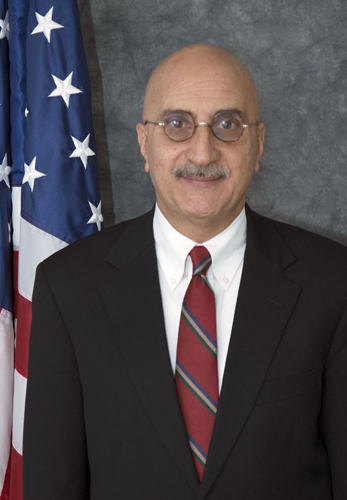
AHRQ Showcases Research on Strategies To Address Physician Burnout
A new AHRQ Views blog looks at factors that can contribute to physician burnout, including a lack of control over work conditions, time pressures, chaotic workplaces and difficulties associated with electronic health records. Co-authored by Gopal Khanna, M.B.A., the agency’s director, and Arlene Bierman, M.D., director of AHRQ’s Center for Evidence and Practice Improvement, the blog also offers potential strategies to minimize burnout, such as expanding the ways nurses and medical assistants might interact with patients. In addition to the blog, AHRQ has profiled grantee Mark Linzer, M.D., of Hennepin County Medical Center in Minneapolis, who has studied working conditions in health care, especially as they contribute to burnout, for the past 15 years and has created a tool to measure burnout. For more information about AHRQ’s work on physician burnout, access our online fact sheet.
AHRQ Views
Blog posts from AHRQ leaders
JUL
24
2017
Combatting the Burnout Epidemic
 Being a physician can be stressful. The days are long. The work flow may feel disorganized. The administrative tasks and demands for documentation seem greater every day. No wonder even the most dedicated professionals can burn out.
Being a physician can be stressful. The days are long. The work flow may feel disorganized. The administrative tasks and demands for documentation seem greater every day. No wonder even the most dedicated professionals can burn out.And that’s a problem.
The emotional exhaustion of burnout can have professional and personal consequences for physicians. Burnout can damage morale and lead once-enthusiastic, dedicated doctors to quit practicing medicine completely. It can also lead to depression, alcohol abuse, and thoughts of suicide.
Patients who receive care from a burned-out physician, in turn, may find themselves sharing an exam room with a doctor who’s become cynical or lacks empathy. That can diminish patient satisfaction and reduce a patient’s willingness to adhere to treatment recommendations.
These issues are among reasons HHS has made it a priority to address physician burnout and why AHRQ has had a longstanding interest in the subject. Since 2001, AHRQ has been funding research on physicians’ working conditions to determine what causes burnout and explore interventions to combat it. Causes of burnout can include a lack of control over work conditions, time pressures, chaotic workplaces, and a lack of alignment of values between providers and their leaders, according to AHRQ grantee, Mark Linzer, M.D., FACP, of Hennepin County Medical Center in Minneapolis, MN, who has been studying burnout with us since the very beginning.

Even technology, which is supposed to make life easier, can add to physician stress. AHRQ-funded studies have shown that as primary care practices’ use of electronic health records matures, stress levels get worse—and then better—but those stress levels never go back to where the practices were before electronic health records arrived.
We’ve also found that when physicians use electronic health records during patient encounters, the already-short visits become even shorter because physicians need to spend time entering data. The bottom line is that using electronic health records takes time—and not planning for that extra time that’s needed has severe consequences, including stress, burnout, and physicians’ intent to leave practice.
There is no silver bullet for fixing the burnout epidemic. Several strategies hold promise, however. For example, some primary care offices curb burnout by emphasizing communication among their staff, promoting a culture of quality rather than focusing on the number of patients seen, and targeting the hectic office environment for quality improvements.
AHRQ’s TeamSTEPPS® for Office-Based Care can help medical office teams begin this journey. Intended for practice facilitators—individuals who play a key role in leading and assisting practices with their quality improvement and practice transformation efforts—the online modules help medical offices develop and optimize team knowledge and performance.
Another emerging theme for minimizing burnout in primary care practices involves carving out more time for patient care. These interventions include simple changes, such as allotting time in physicians’ work schedules to review lab results before patient visits. That’s one logical step toward making appointments as productive as possible.
Practices can also consider expanding the roles of nurses and medical assistants by giving them training in and responsibility for preventive care and chronic care health coaching under physician-written standing orders.
There is much we can do to restore the joy in practice. Designing systems to support caring, reengineering electronic health records to align with rather than impede work flow, and engaging teams to optimize care will let clinicians spend much more one-on-one quality time with the patient. That just makes sense—it’s why most clinicians went into medicine in the first place.
Gopal Khanna is Director of AHRQ; Arlene Bierman is Director of AHRQ’s Center for Evidence and Practice Improvement.
Page last reviewed July 2017
Page originally created July 2017
Page originally created July 2017
Internet Citation: Combatting the Burnout Epidemic. Content last reviewed July 2017. Agency for Healthcare Research and Quality, Rockville, MD. http://www.ahrq.gov/news/blog/ahrqviews/physician-burnout.html





















.jpg)









No hay comentarios:
Publicar un comentario